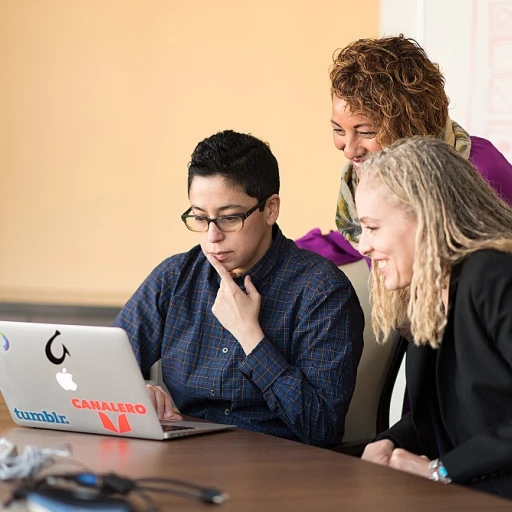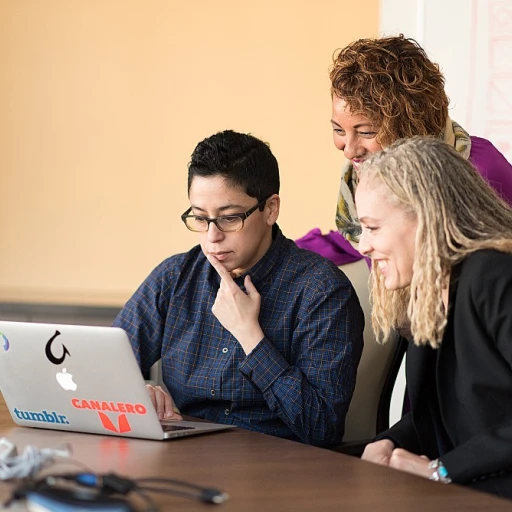
Defining Continuous Partial Attention
Exploring the Concept of Continuous Partial Attention
In today's fast-paced digital world, the concept of continuous partial attention has become increasingly relevant. This term, often associated with the constant multitasking that technology enables, describes a state where individuals are perpetually scanning their environment for opportunities and threats, without fully focusing on any single task. Unlike multitasking, which involves juggling multiple tasks simultaneously, continuous partial attention is about maintaining a constant level of alertness and readiness to respond to stimuli.
The rise of the internet and digital devices has significantly contributed to this phenomenon. With the ability to access information at any time, people often find themselves dividing their attention across various platforms and tasks. From checking emails to scrolling through social media, the allure of staying connected can lead to a fragmented attention span. This is particularly evident among college students and university students who are often seen toggling between academic responsibilities and digital distractions.
Continuous partial attention is not just a personal habit but a societal trend influenced by the demands of modern life. The need to stay informed and connected has become a priority, often at the expense of deep, focused attention. This shift has implications for various sectors, including higher education, where students are expected to balance rigorous academic schedules with the constant influx of digital information.
Understanding this concept is crucial for navigating the complexities of contemporary life. As we delve deeper into its role in politics and public engagement, it becomes clear that continuous partial attention is not just a personal challenge but a collective one. To gain further insights into how this affects evolving business trends, you can explore more on evolving business trends.
The Role of Continuous Partial Attention in Politics
The Influence of Digital Technology on Political Engagement
In the digital age, continuous partial attention has become a defining feature of our interactions, including in the political sphere. This phenomenon, where individuals manage multiple streams of information simultaneously, has been significantly facilitated by the use of cell phones, the internet, and other technological tools. Whether reading a news article, engaging in academic learning, or participating in political debates, the constant influx of information demands our attention, dividing it across various digital sources.
Multi-tasking with partial attention due to digital devices influences not only individuals but also collective political behavior. During key times like November and October, when elections are held, political campaigns and discussions occupy more space in our online experiences. This is especially critical for university students and those in higher education, who are often juggling academic commitments alongside staying engaged in political matters.
Unlike complete focus, continuous partial attention allows individuals to maintain awareness of various topics but often without the depth required for informed decision-making. This can result in superficial interactions with political content, meaning critical aspects of policy or electoral decisions might not receive the thoughtful consideration necessary for deep understanding. The myriad of notifications and digital media that populate our screens from January to December contribute to this state of continuous alertness, yet often with limited depth of comprehension.
In this context, political entities and real estate planners can benefit significantly from methodologies such as agility and Six Sigma (enhancing business efficiency), which can be adapted to develop strategies that cater for both the breadth and depth of information required in political engagement.
Understanding the dynamics of partial attention within political participation is crucial for both political leaders and constituents. By navigating these technological influences effectively, individuals can better commit their time in informed ways, which is vital from April to March, where legislation and policy come to fruition. Harnessing the multiplicity of digital platforms while preventing a decline into surface-level understanding sets the stage for a more informed voter base and engaged citizenry.
Implications for Political Decision-Making
The Influence of Continuous Partial Attention on Policy Decisions
In the digital age, decision-making, especially in politics, has been significantly influenced by continuous partial attention. This phenomenon reflects our constant engagement with multiple sources of information and multitasking, often due to the ubiquity of technology like cell phones and the internet. As political leaders and decision-makers attempt to navigate this information-rich environment, the challenge becomes apparent: how to prioritize vital matters amidst the background noise. While spending time reading detailed reports or immersing themselves in in-depth analysis, decision-makers may feel pressured to process vast streams of information rapidly. This urgency is partly because their attention gets continuously diverted by digital notifications, compelling them to switch focus frequently. The result? A potential compromise on the depth and quality of their deliberations, often leading to decisions based on incomplete data. In a setup where partial attention is the norm, an effective time strategy is paramount for political figures. Ensuring that attention to primary issues does not get diluted when multitasking becomes a necessity involves structured schedules and clear priorities. This approach is increasingly relevant for stakeholders in higher education and academic arenas, such as university and college students, who may later find themselves within the political sphere. Post-realization of its impacts, there has been a gradual movement in political and academic circles to seek strategies that mitigate adverse effects on political decision-making. Active engagement such as "continuous" training sessions, open discussions, and a proficient understanding of data privacy become critical in promoting thoughtful governance. Mastering these aspects is crucial for political integrity, and you can discover more about such competencies here.Public Engagement and Continuous Partial Attention
Engaging the Public Amidst the Noise
The prevalence of continuous partial attention, amplified by technology, affects how people engage with political discourse. In today's digital era, where the internet serves as a pivotal source of information, individuals often find themselves bombarded with notifications and information feeds. This environment fosters an atmosphere where citizens, like college and university students, frequently shift their attention between multiple tasks without fully immersing themselves in any single topic. From real estate professionals to academic scholars, everyone experiences this phenomenon.
Such multitasking can dilute the quality of public engagement. Instead of in-depth reading and critical thinking, individuals may skim articles or settle for snippets of information. Political matters, discussed in short bursts on social media platforms, often miss the depth and deliberation required for nuanced understanding. For example, individuals may quickly click through PDFs or download materials without investing time in comprehensive analysis. This behavioral shift can be traced throughout the year—be it in February, March, or even November. During these months, which align with significant political events, the attention of the populace is especially fragmented.
The implications are profound. Politicians and policymakers, aware of this trend, might simplify complex issues into digestible sound bites, catering to this partial attention span. Over time, this could potentially lead to more sensationalism in political discourse, rather than substantive discussion.
Strategies to Mitigate Negative Effects
Addressing the Drawbacks of Partial Attention in Political Arenas
Continuous partial attention, as a phenomenon evident in digital-era politics, necessitates strategic interventions to mitigate its negative impacts. Here, we explore ways to enhance focus and improve the decision-making process, especially by utilizing technology and promoting thoughtful engagement.- Streamline Information Channels: In a world brimming with information, politicians and stakeholders need to streamline channels to avoid information overload. Filtering essential data ensures better attention and aids in informed decision-making.
- Promote Digital Literacy: Improving digital literacy among politicians and the public is essential. By providing education on effective digital multitasking, from using tools that analyze political trends to understanding digital communication means, individuals can manage their partial attention more effectively.
- Encourage Active Public Participation: Politicians should advocate for interactive platforms that encourage public dialogue, minimizing passive consumption of information. This not only nurtures a culture of informed citizens but also reduces the distraction caused by multitasking.
- Implement Scheduled Breaks in Meetings: Regular intervals during political debates or meetings can help participants recalibrate their focus. Taking time to digest information before making critical decisions fosters a more thoughtful political process.
- Leverage Technology Wisely: The role of technology in continuous partial attention cannot be understated. By utilizing focused digital solutions, such as productivity apps and attention management software, political figures and students in higher education settings improve their concentration and productivity.
Future Trends and Considerations
Glimpsing Into the Future: Navigating Digital Attention
The landscape of continuous partial attention is ever-evolving, shaped significantly by rapid advancements in technology and the proliferation of digital devices. As we look toward the future, understanding the dynamics of this concept becomes increasingly important for political entities aiming to maintain engagement in a connected world. As the internet becomes more intertwined with our everyday lives, people – including college and university students – will likely face heightened challenges of digital multitasking. This phenomenon will further impact how political figures communicate effectively, making the role of clear, concise messaging critical in gaining and retaining the attention of a distracted audience. Several trends might influence future engagement and policy-making:- Increase in Digital Platforms: The expansion of various online platforms means political messages must be adaptable not only within traditional avenues but also across emerging technologies. This requires a strategic approach to manage partial attention spans effectively.
- Technology as a Double-Edged Sword: While technology can enhance information dissemination rapidly across cell phones and other devices, it also requires balancing to prevent overwhelming users with non-stop notifications, leading to saturation and diminished attention spans.
- Impact on Learning and Academia: Continuous partial attention is not isolated within politics. The academic field, including higher education, is experiencing shifts due to increased reliance on digital learning resources like PDF downloads and online reading. These shifts could affect how informed people remain about political developments.
- Adapting Messaging for Diverse Audiences: Political figures must hone their communication strategies to reach audiences across different channels, especially those involving younger generations like students often engaged in real-time multitasking.












